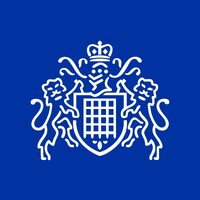
NSW Police Force Company Cyber Security Posture
nsw.gov.auThe NSW Police Force is: - Australia's oldest and largest police organisation; - one of the biggest in the English speaking world; - serves a population of seven million in the state of New South Wales, an 801,600 square kilometre area; - operates on land, sea and from the air; - provides community based policing from more than 500 police stations to a wide range of ethnic communities speaking more than 30 languages;
NPF Company Details
nsw-police-force
3431 employees
60915.0
922
Law Enforcement
nsw.gov.au
Scan still pending
NSW_8323084
In-progress
Between 900 and 1000
This score is AI-generated and less favored by cyber insurers, who prefer the TPRM score.
 NPF Global Score
NPF Global Score.png)

NSW Police Force Company Scoring based on AI Models
| Model Name | Date | Description | Current Score Difference | Score |
|---|---|---|---|---|
| AVERAGE-Industry | 03-12-2025 | This score represents the average cybersecurity rating of companies already scanned within the same industry. It provides a benchmark to compare an individual company's security posture against its industry peers. | N/A | Between 900 and 1000 |
NSW Police Force Company Cyber Security News & History
| Entity | Type | Severity | Impact | Seen | Url ID | Details | View |
|---|---|---|---|---|---|---|---|
| NSW Office of Local Government | Breach | 100 | 6 | 02/2022 | NSW234711522 | Link | |
Rankiteo Explanation : Attack threatening the economy of a geographical regionDescription: The NSW government's QR code data breach accidently exposed the regional addresses of more than 500,000 organisations including defence sites, a missile maintenance unit and domestic violence shelters The addresses collected by the NSW government including correctional facilities, critical infrastructure networks including power stations and tunnel entry sites as well as dozens of shelters and crisis accommodation centres for women across the state was also found NSW data website. The cyber experts raised the alarm to the NSW government to secure the data immediately. | |||||||
| NSW Department of Education | Cyber Attack | 100 | 5 | 07/2021 | NSW16403223 | Link | |
Rankiteo Explanation : Attack threatening the organization’s existenceDescription: The New South Wales (NSW) education department in Australia stated that their internal system had been a victim of a cyber attack. The department took some systems offline while conducting its investigation because protecting student and staff data is of the utmost importance. The department has reported the issue to the state's police and federal government organizations and collaborated with Cyber Security NSW to find a solution. | |||||||
| NSW Police Force | Data Leak | 85 | 3 | 08/2020 | NSW212518123 | Link | |
Rankiteo Explanation : Attack with significant impact with internal employee data leaksDescription: The NSW Police leaked the emails of over 150 complainants. The Complainants contacted them in order to raise concerns regarding officers’ use of force following the Sydney Black Lives Matter protest. According to section 169A of the Police Act 1990 (NSW) a member of the NSW Police Force must not disclose to any person the identity of a complainant unless the disclosure is made in accordance with guidelines established by the Commissioner, with the consent of the complainant, in a situation where it is required by law, or for the purposes of any legal proceedings before a court or tribunal. It was a complete betrayal of public trust and accountability. | |||||||
| Transport for NSW | Data Leak | 60 | 3 | 02/2021 | TRA23379923 | Link | |
Rankiteo Explanation : Attack with significant impact with internal employee data leaksDescription: A cyber attack on an Accellion-owned file transfer system has been identified as having an effect on Transport for New South Wales (TfNSW). Some Transport for NSW information was obtained prior to the attack on Accellion servers being stopped. According to TfNSW, the state government investigation is being managed by Cyber Security NSW with the aid of forensic experts. In order to investigate the implications of the incident, particularly how it may have affected customer data, the organisation said it is closely collaborating with Cyber Security NSW. | |||||||
NSW Police Force Company Subsidiaries

The NSW Police Force is: - Australia's oldest and largest police organisation; - one of the biggest in the English speaking world; - serves a population of seven million in the state of New South Wales, an 801,600 square kilometre area; - operates on land, sea and from the air; - provides community based policing from more than 500 police stations to a wide range of ethnic communities speaking more than 30 languages;
Access Data Using Our API

Get company history
.png)
NPF Cyber Security News
NSW Police Force to get $125.8m cyber capacity boost
The 2025–26 state budget will provide the NSW Police Force with “the best and latest cyber capabilities”.
NSW Police to embark on $126m IT overhaul
NSW Police is set for a major technology upgrade program of work covering its cyber security, networks and payroll systems.
$125.8m to deliver critical cyber upgrades for NSW Police Force
“The investment in the Cyber Security Enhancement Program ensures that police infrastructure and critical information is safe from malicious ...
NSW Police arrest and charge hacker behind years of Western Sydney University cyber attacks
The NSW Police Cybercrime Squad has arrested the hacker believed to be behind the wave of cyber attacks on Western Sydney University.
New details after 9000 court docs leaked
Australians will need to wait about a week before finding out what data was viewed by a hacker after an estimated 9000 “sensitive court ...
NSW court website hit by 'major data breach', 9,000 documents downloaded
The NSW Department of Communities and Justice has been involved in a major data breach, resulting in approximately 9,000 court documents being ...
NSW Police firewall admin confronted over WeChat
A NSW Police firewall security administrator of 17 years, who was let go for installing WeChat on a work computer and allegedly “being dishonest” when ...
NSW Police Open Digital Forensics Lab for Cybercrime Investigators HS Today
“The charging of a man today for money laundering via Cryptocurrency is a perfect example of how proficient the NSW Police Force is at ...
CyberCX experts track 'fugitives' in 3rd season of Hunted
The third season of Channel 10's hit series Hunted has been run and won, with a team from CyberCX among the detectives and intelligence agents ...

NPF Similar Companies

SAPS
Policing in South Africa. I am attached to the newly formed Directorate for Priority Crime Investigations. Formally I was attached to the Detecitve Service and have been conduction investigations for over 25 years. I have also been attached to the National Inspectorate Division of the SAPS for soem

Metropolitan Police
The Metropolitan Police Service is famed around the world and has a unique place in the history of policing. Our headquarters at New Scotland Yard - and its iconic revolving sign - has provided the backdrop to some of the most high profile and complex law enforcement investigations the world has e

FBI Virtual Training Academy
The FBI Virtual Academy is the portal to all FBI training opportunities offered to our external partners. FBI Virtual Academy registration is open to all personnel serving in any agency within the criminal justice or intelligence community – including state, local, tribal, and international law enfo

Singapore Police Force
The Singapore Police Force (SPF) is a uniformed organisation under the purview of the Ministry of Home Affairs. The mission of the SPF is to prevent, deter and detect crime to ensure the safety and security of Singapore. The Singapore Police Force’s official LinkedIn page should NOT be used for

Swedish Police Authority
Vi gör hela Sverige tryggt och säkert! Att arbeta inom polisen är ett av de finaste uppdrag man kan ha. Du bidrar till samhället genom att göra hela Sverige tryggt och säkert. Oavsett om du jobbar i en civil roll eller som polis, är möjligheterna att växa med en större uppgift många. Vi är Sverig

Arma dei Carabinieri
The Carabinieri Corps is an armed Force permanently enforcing public security. It fully contributes to the "external defense" and "internal security" systems of Italy. As an armed force, it participates in international peacekeeping and security missions and carries out military police functions wi

Frequently Asked Questions
Explore insights on cybersecurity incidents, risk posture, and Rankiteo's assessments.
NPF CyberSecurity History Information
How many cyber incidents has NPF faced?
Total Incidents: According to Rankiteo, NPF has faced 4 incidents in the past.
What types of cybersecurity incidents have occurred at NPF?
Incident Types: The types of cybersecurity incidents that have occurred incidents Data Leak, Breach and Cyber Attack.
How does NPF detect and respond to cybersecurity incidents?
Detection and Response: The company detects and responds to cybersecurity incidents through third party assistance with Forensic Experts and third party assistance with Cyber Security NSW and law enforcement notified with True and containment measures with Taking some systems offline and remediation measures with Cyber experts raised the alarm to the NSW government to secure the data immediately.
Incident Details
Can you provide details on each incident?

Incident : Data Breach
Title: Cyber Attack on Transport for New South Wales via Accellion File Transfer System
Description: A cyber attack on an Accellion-owned file transfer system has been identified as having an effect on Transport for New South Wales (TfNSW). Some Transport for NSW information was obtained prior to the attack on Accellion servers being stopped. According to TfNSW, the state government investigation is being managed by Cyber Security NSW with the aid of forensic experts. In order to investigate the implications of the incident, particularly how it may have affected customer data, the organisation said it is closely collaborating with Cyber Security NSW.
Type: Data Breach
Attack Vector: Exploitation of Vulnerability
Vulnerability Exploited: Accellion File Transfer System

Incident : Cyber Attack
Title: Cyber Attack on NSW Education Department
Description: The New South Wales (NSW) education department in Australia stated that their internal system had been a victim of a cyber attack. The department took some systems offline while conducting its investigation because protecting student and staff data is of the utmost importance. The department has reported the issue to the state's police and federal government organizations and collaborated with Cyber Security NSW to find a solution.
Type: Cyber Attack

Incident : Data Breach
Title: NSW Police Email Leak
Description: The NSW Police leaked the emails of over 150 complainants who raised concerns regarding officers’ use of force following the Sydney Black Lives Matter protest.
Type: Data Breach

Incident : Data Breach
Title: NSW Government QR Code Data Breach
Description: The NSW government's QR code data breach accidentally exposed the regional addresses of more than 500,000 organisations including defence sites, a missile maintenance unit, and domestic violence shelters. The addresses collected by the NSW government including correctional facilities, critical infrastructure networks including power stations and tunnel entry sites as well as dozens of shelters and crisis accommodation centres for women across the state was also found on NSW data website. Cyber experts raised the alarm to the NSW government to secure the data immediately.
Type: Data Breach
Attack Vector: Accidental Exposure
What are the most common types of attacks the company has faced?
Common Attack Types: The most common types of attacks the company has faced is Data Leak.
How does the company identify the attack vectors used in incidents?
Identification of Attack Vectors: The company identifies the attack vectors used in incidents through Accellion File Transfer System.
Impact of the Incidents
What was the impact of each incident?

Incident : Data Breach TRA23379923
Data Compromised: Customer Data
Systems Affected: Accellion File Transfer System

Incident : Data Breach NSW212518123
Data Compromised: Emails of complainants
Brand Reputation Impact: Public trust betrayal and accountability issues
Legal Liabilities: ['Violation of section 169A of the Police Act 1990 (NSW)']

Incident : Data Breach NSW234711522
Data Compromised: Regional addresses, Defence sites, Missile maintenance unit, Domestic violence shelters, Correctional facilities, Critical infrastructure networks, Power stations, Tunnel entry sites, Shelters and crisis accommodation centres
What types of data are most commonly compromised in incidents?
Commonly Compromised Data Types: The types of data most commonly compromised in incidents are Customer Data, Emails and Addresses.
Which entities were affected by each incident?

Incident : Data Breach TRA23379923
Entity Type: Government Agency
Industry: Transportation
Location: New South Wales, Australia

Incident : Cyber Attack NSW16403223
Entity Type: Government Department
Industry: Education
Location: New South Wales, Australia

Incident : Data Breach NSW212518123
Entity Type: Government Agency
Industry: Law Enforcement
Location: New South Wales, Australia
Customers Affected: 150

Incident : Data Breach NSW234711522
Entity Type: Government
Industry: Public Sector
Location: New South Wales, Australia
Response to the Incidents
What measures were taken in response to each incident?

Incident : Data Breach TRA23379923
Third Party Assistance: Forensic Experts

Incident : Cyber Attack NSW16403223
Third Party Assistance: Cyber Security NSW
Law Enforcement Notified: True
Containment Measures: Taking some systems offline

Incident : Data Breach NSW234711522
Remediation Measures: Cyber experts raised the alarm to the NSW government to secure the data immediately
How does the company involve third-party assistance in incident response?
Third-Party Assistance: The company involves third-party assistance in incident response through Forensic Experts, Cyber Security NSW.
Data Breach Information
What type of data was compromised in each breach?

Incident : Data Breach TRA23379923
Type of Data Compromised: Customer Data

Incident : Data Breach NSW212518123
Type of Data Compromised: Emails
Number of Records Exposed: 150
Sensitivity of Data: Moderate
Personally Identifiable Information: Emails

Incident : Data Breach NSW234711522
Type of Data Compromised: Addresses
Number of Records Exposed: 500,000
Sensitivity of Data: High
What measures does the company take to prevent data exfiltration?
Prevention of Data Exfiltration: The company takes the following measures to prevent data exfiltration: Cyber experts raised the alarm to the NSW government to secure the data immediately.
How does the company handle incidents involving personally identifiable information (PII)?
Handling of PII Incidents: The company handles incidents involving personally identifiable information (PII) through was Taking some systems offline.
Regulatory Compliance
Were there any regulatory violations and fines imposed for each incident?

Incident : Data Breach NSW212518123
Regulations Violated: Section 169A of the Police Act 1990 (NSW)
References
Where can I find more information about each incident?

Incident : Data Breach TRA23379923
Source: Transport for New South Wales

Incident : Data Breach NSW234711522
Source: NSW Government QR Code Data Breach
Where can stakeholders find additional resources on cybersecurity best practices?
Additional Resources: Stakeholders can find additional resources on cybersecurity best practices at and Source: Transport for New South Wales, and Source: NSW Government QR Code Data Breach.
Investigation Status
What is the current status of the investigation for each incident?

Incident : Data Breach TRA23379923
Investigation Status: Ongoing

Incident : Cyber Attack NSW16403223
Investigation Status: Ongoing
Initial Access Broker
How did the initial access broker gain entry for each incident?

Incident : Data Breach TRA23379923
Entry Point: Accellion File Transfer System
Post-Incident Analysis
What is the company's process for conducting post-incident analysis?
Post-Incident Analysis Process: The company's process for conducting post-incident analysis is described as Forensic Experts, Cyber Security NSW.
Additional Questions
Impact of the Incidents
What was the most significant data compromised in an incident?
Most Significant Data Compromised: The most significant data compromised in an incident were Customer Data, Emails of complainants, Regional addresses, Defence sites, Missile maintenance unit, Domestic violence shelters, Correctional facilities, Critical infrastructure networks, Power stations, Tunnel entry sites and Shelters and crisis accommodation centres.
What was the most significant system affected in an incident?
Most Significant System Affected: The most significant system affected in an incident was Accellion File Transfer System.
Response to the Incidents
What third-party assistance was involved in the most recent incident?
Third-Party Assistance in Most Recent Incident: The third-party assistance involved in the most recent incident was Forensic Experts, Cyber Security NSW.
What containment measures were taken in the most recent incident?
Containment Measures in Most Recent Incident: The containment measures taken in the most recent incident was Taking some systems offline.
Data Breach Information
What was the most sensitive data compromised in a breach?
Most Sensitive Data Compromised: The most sensitive data compromised in a breach were Customer Data, Emails of complainants, Regional addresses, Defence sites, Missile maintenance unit, Domestic violence shelters, Correctional facilities, Critical infrastructure networks, Power stations, Tunnel entry sites and Shelters and crisis accommodation centres.
What was the number of records exposed in the most significant breach?
Number of Records Exposed in Most Significant Breach: The number of records exposed in the most significant breach was 500.1K.
References
What is the most recent source of information about an incident?
Most Recent Source: The most recent source of information about an incident are Transport for New South Wales and NSW Government QR Code Data Breach.
Investigation Status
What is the current status of the most recent investigation?
Current Status of Most Recent Investigation: The current status of the most recent investigation is Ongoing.
Initial Access Broker
What was the most recent entry point used by an initial access broker?
Most Recent Entry Point: The most recent entry point used by an initial access broker was an Accellion File Transfer System.
What Do We Measure?
















Every week, Rankiteo analyzes billions of signals to give organizations a sharper, faster view of emerging risks. With deeper, more actionable intelligence at their fingertips, security teams can outpace threat actors, respond instantly to Zero-Day attacks, and dramatically shrink their risk exposure window.
These are some of the factors we use to calculate the overall score:
Identify exposed access points, detect misconfigured SSL certificates, and uncover vulnerabilities across the network infrastructure.
Gain visibility into the software components used within an organization to detect vulnerabilities, manage risk, and ensure supply chain security.
Monitor and manage all IT assets and their configurations to ensure accurate, real-time visibility across the company's technology environment.
Leverage real-time insights on active threats, malware campaigns, and emerging vulnerabilities to proactively defend against evolving cyberattacks.




